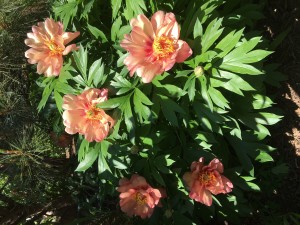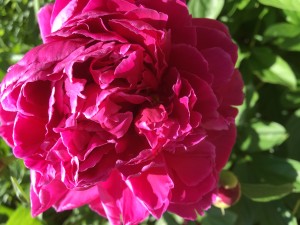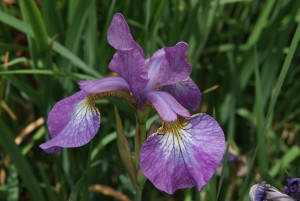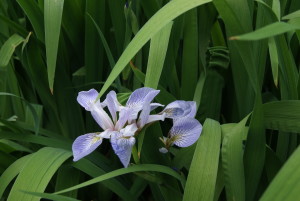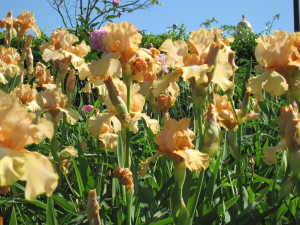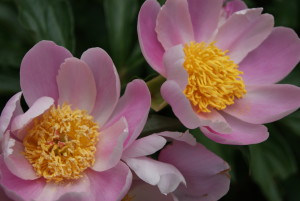(This blog contributed by Michael Pistininzi, Greenway Horticulturist)
Many classic spring flowers have an ancient tradition. People all over the world have enjoyed the brilliance of peonies and irises for thousands of years. Their names alone illustrate their old ties and our continued admiration of these colorful flowers. Peonies are named after the medical pupil, Paeon, of Asclepius (the Greek god of medicine and healing) who was turned into the Peony by Zeus himself. Iris is the Greek goddess of the rainbow which is an appropriate name for the iris flower. Here on the Rose Kennedy Greenway, peonies and irises make a big appearance from mid May through June and can be viewed all over the park.
Chinese culture has revered the peony for many centuries as a classic symbol of riches and honor. In the Chinatown park we host both herbaceous and woody varieties. The herbaceous peony will die back to the soil each year and regrow from the roots. They can easily be cut back hard each season and their reddish growth can be seen in the early spring when they emerge as is the case for Paeonia lactiflora. The other parks of the Greenway including the Fort Point Channel and the North End park host various cultivars of Paeonia lactiflora with many different colors. The woody varieties, known as Tree Peonies, form a hardy shrub like Paeonia suffruticosa. These will lose their leaves in the fall and will resprout from their old growth.
It is important to know what kind of peony exists in your garden before any maintenance. In general peonies do not require much maintenance. Once established, they will continue to live for up to 100 years! If you have peonies in your garden, you might notice the heavy ant traffic on the stalks as blooms just begin to open. Do not spray these guys. The peony secretes nectar on the outside of its bud to attract the ants which actually help control bud eating pests. Whether you buy cut peonies or grow them, everyone can enjoy and respect the big, layered petals and soft colors of this spring bloomer.
Irises usually bloom in the same time frame as the peonies. The Iris genus has hundreds of species (over 300) and is found all over the North hemisphere. The rhizome growth of Iris make them easily transplantable and a great addition to any garden.
So what’s with the beard? While looking for a new iris to plant, you might come across this term. The bearded iris has a thick, bushy “beard” at the base of each of its falls (lower petals). It’s a small distinction, but the genus is so big and diverse, that there are many sub-classifications for the iris, the beard being just one. Here on the Rose Kennedy Greenway, people can see the native Iris versicolor which can be seen through the Wharf District Parks. It is usually seen growing in wet areas, like along rivers and ponds naturally. Iris germanica dots the Ft. Point Channel Parks and Iris sibirica can be viewed in the Chinatown Park.
June is a very colorful month here at the Rose Kennedy Greenway. Many other herbaceous perennials have put on plenty of growth and started to bloom with the peonies and irises. Take the longer, leisurely way to work and walk through the Greenway to see some of these flower miracles.


